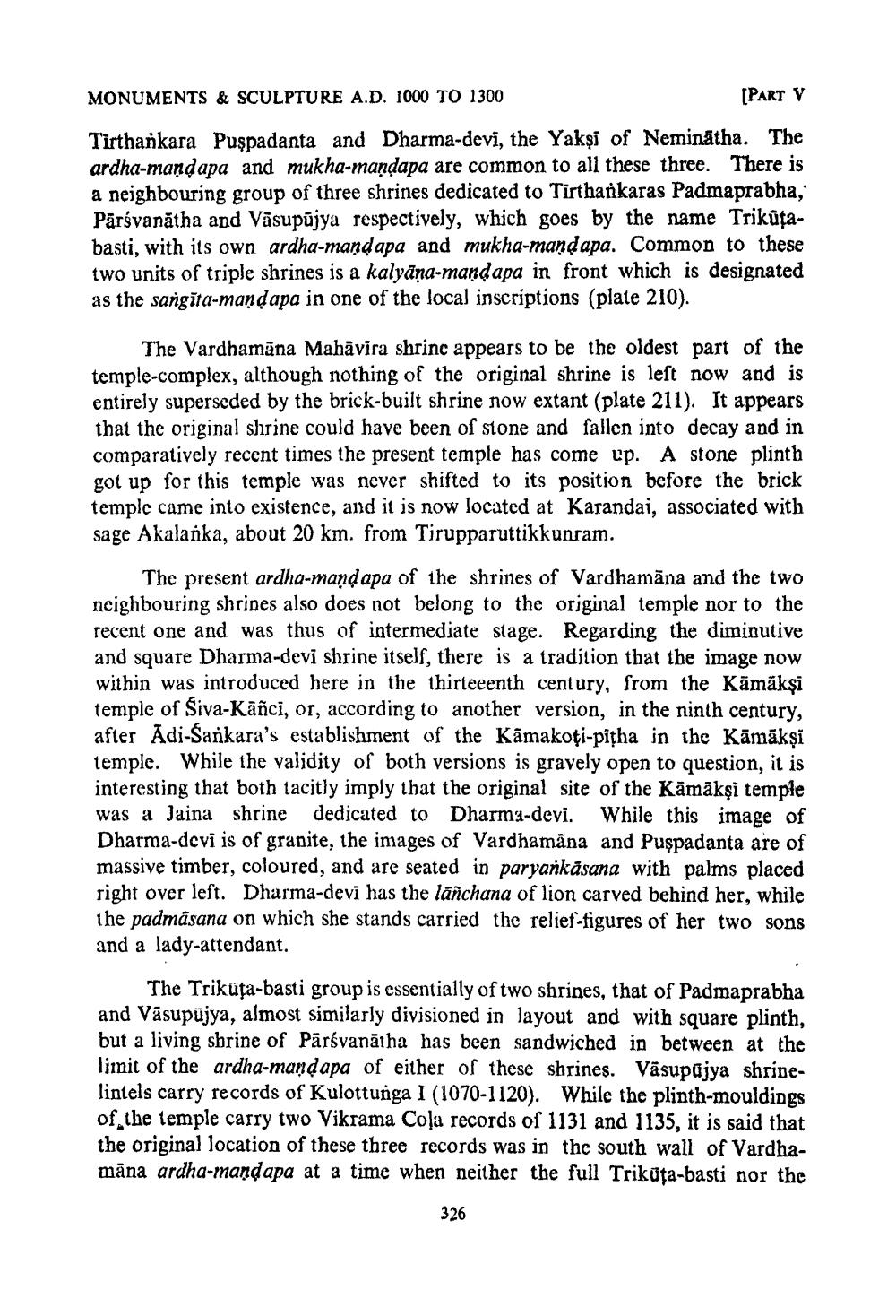________________
MONUMENTS & SCULPTURE A.D. 1000 TO 1300
[PART V
Tirthankara Puspadanta and Dharma-devi, the Yakşi of Neminatha. The ardha-maṇḍapa and mukha-maṇḍapa are common to all these three. There is a neighbouring group of three shrines dedicated to Tirthankaras Padmaprabha, Pārsvanatha and Vasupūjya respectively, which goes by the name Trikūtabasti, with its own ardha-mandapa and mukha-mandapa. Common to these two units of triple shrines is a kalyāṇa-maṇḍapa in front which is designated as the sangita-maṇḍapa in one of the local inscriptions (plate 210).
The Vardhamana Mahavira shrine appears to be the oldest part of the temple-complex, although nothing of the original shrine is left now and is entirely superseded by the brick-built shrine now extant (plate 211). It appears that the original shrine could have been of stone and fallen into decay and in comparatively recent times the present temple has come up. A stone plinth got up for this temple was never shifted to its position before the brick temple came into existence, and it is now located at Karandai, associated with sage Akalanka, about 20 km. from Tirupparuttikkunram.
The present ardha-mandapa of the shrines of Vardhamana and the two neighbouring shrines also does not belong to the original temple nor to the recent one and was thus of intermediate stage. Regarding the diminutive and square Dharma-devi shrine itself, there is a tradition that the image now within was introduced here in the thirteeenth century, from the Kāmākşi temple of Siva-Kañci, or, according to another version, in the ninth century, after Adi-Sankara's establishment of the Kamakoti-pitha in the Kāmākṣi temple. While the validity of both versions is gravely open to question, it is interesting that both tacitly imply that the original site of the Kāmākṣi temple was a Jaina shrine dedicated to Dharma-devi. While this image of Dharma-devi is of granite, the images of Vardhamana and Puspadanta are of massive timber, coloured, and are seated in paryankasana with palms placed right over left. Dharma-devi has the lañchana of lion carved behind her, while the padmasana on which she stands carried the relief-figures of her two sons and a lady-attendant.
The Triküta-basti group is essentially of two shrines, that of Padmaprabha and Väsupūjya, almost similarly divisioned in layout and with square plinth, but a living shrine of Pärśvanatha has been sandwiched in between at the limit of the ardha-maṇḍapa of either of these shrines. Väsupujya shrinelintels carry records of Kulottunga I (1070-1120). While the plinth-mouldings of the temple carry two Vikrama Cola records of 1131 and 1135, it is said that the original location of these three records was in the south wall of Vardhamana ardha-mandapa at a time when neither the full Triküta-basti nor the
326




